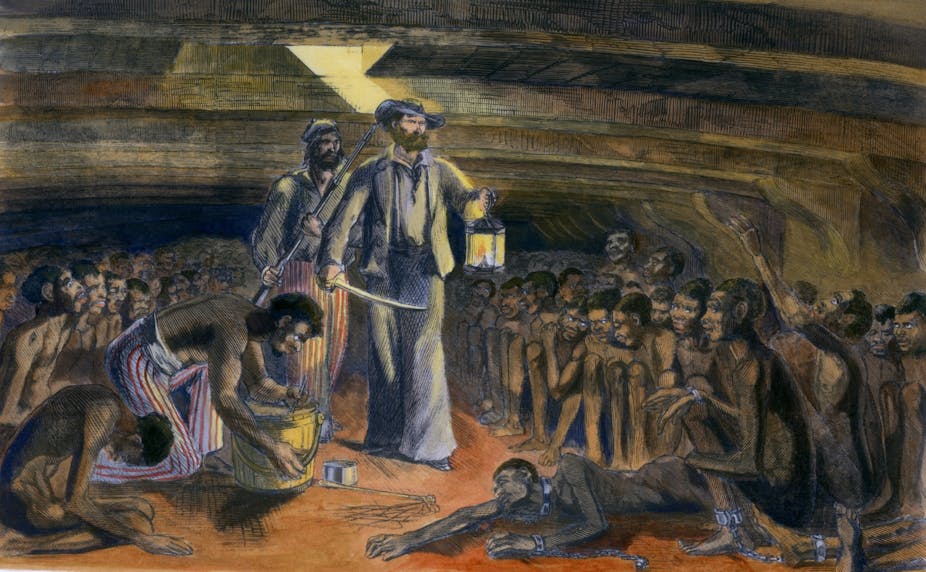
The story of East Africa's role in the transatlantic slave trade
Slave Trade is a print based on George Morland's 1788 original painting of this scene. In a setting on an African coast, a fictional African family is separated and enslaved by European sailors. Though this scene is imagined, Morland drew from descriptions of enslavement that circulated in the news at the time.
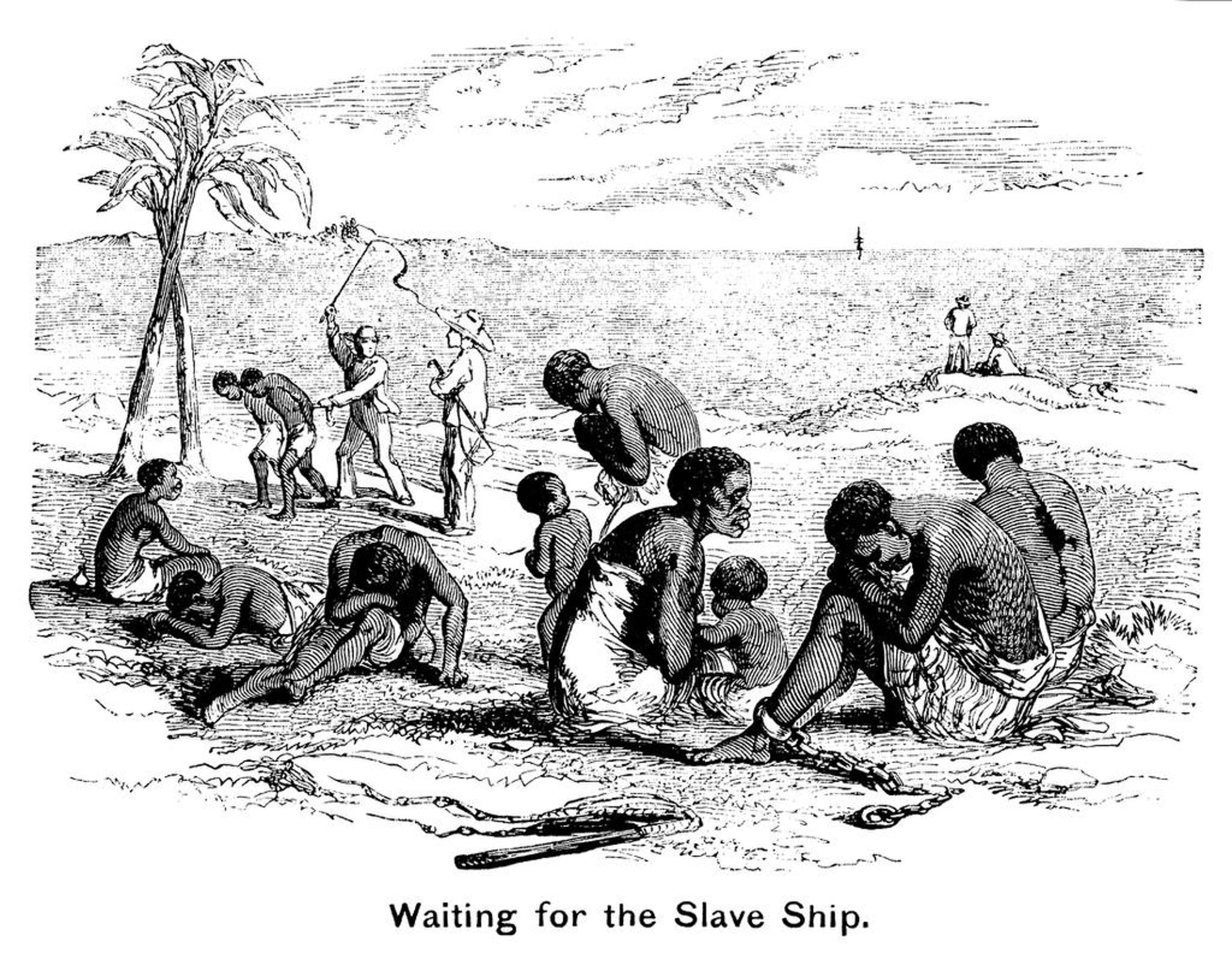
1619 in America 400 years ago, Africans arrived in Virginia
The Slave Market ( French: Le Marché d'esclaves) is an 1866 painting by the French artist Jean-Léon Gérôme. It depicts a Middle Eastern or North African setting where a man inspects the teeth of a nude, female Caucasian slave in the context of the Barbary slave trade .
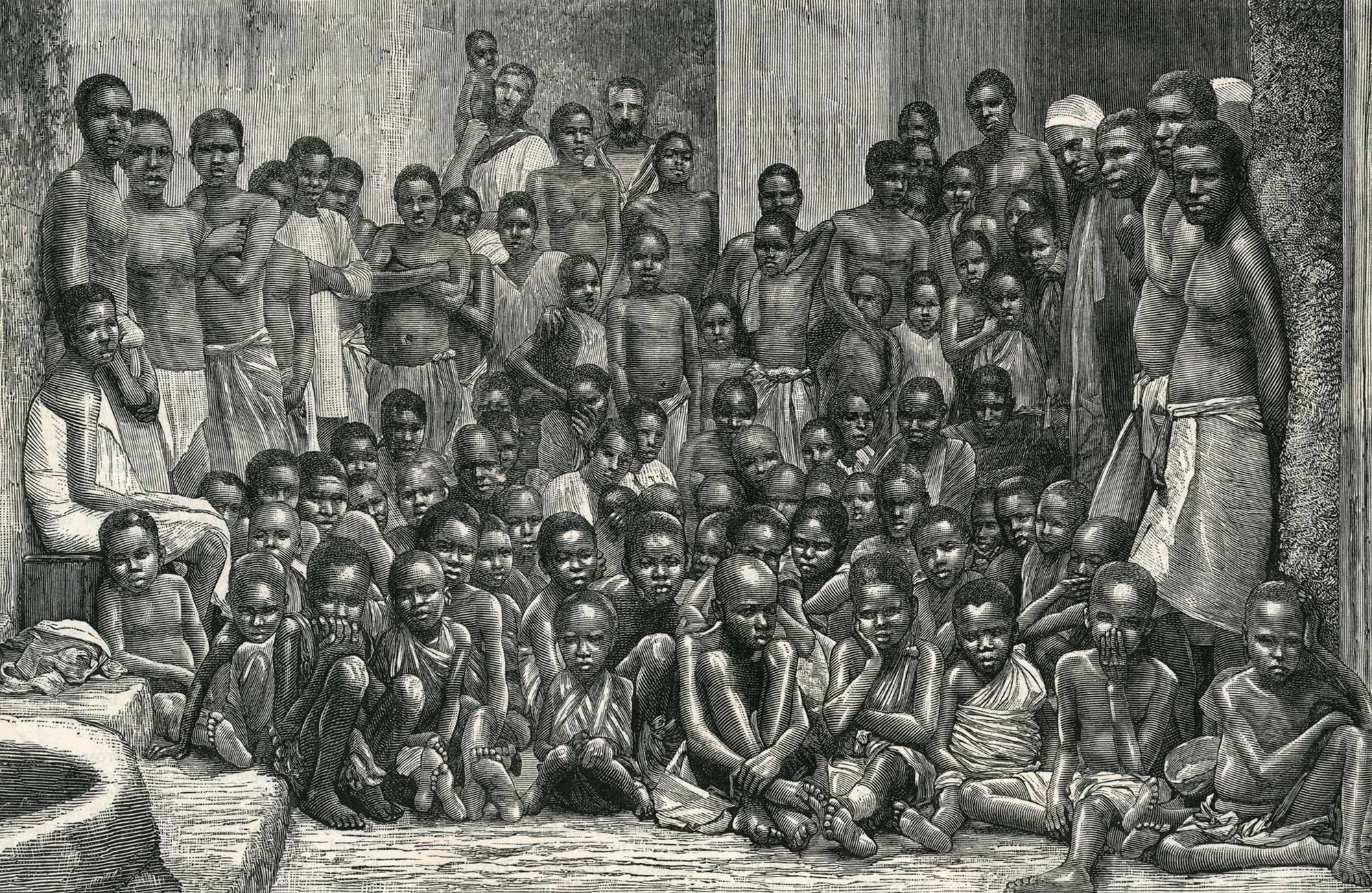
The Transatlantic Slave Trade Database NEH Essentials
Five Black Women Artists Consider An Alternative Telling of the Atlantic Slave Trade. By Shantay Robinson. July 17, 2023 8:25am. Andrea Chung, installation view of the exhibition "if they put an.
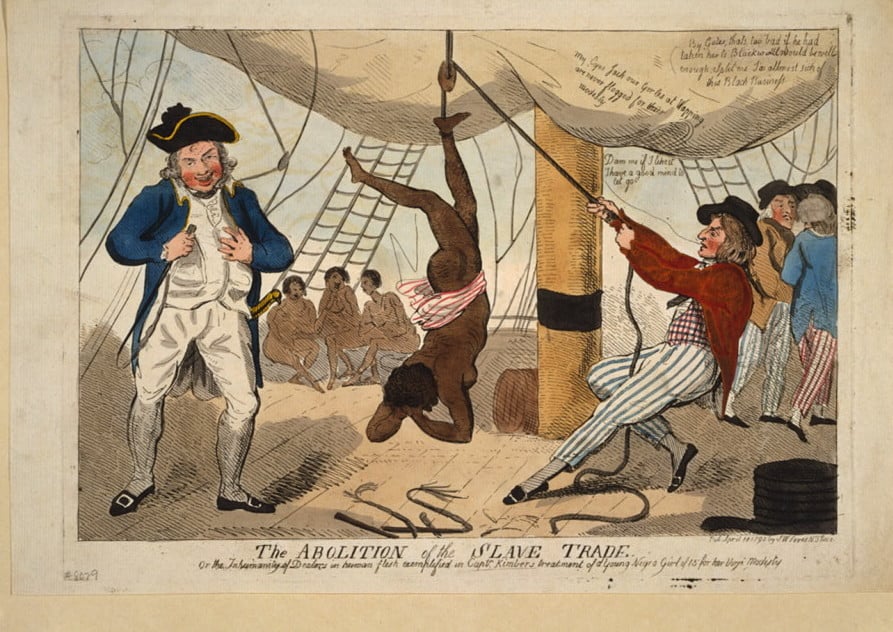
“The abolition of the slave trade Or the inhumanity of dealers in human flesh exemplified in
The term "modern art" often refers to European and American works of the mid-19th through the mid-20th centuries, when artists were moving away from the conventions of realism and experimenting with form and representation, says Huey Copeland, BFC Presidential Associate Professor in the History of Art Department. The concept of modernism, coupled with Black artistry and agency, are at the.
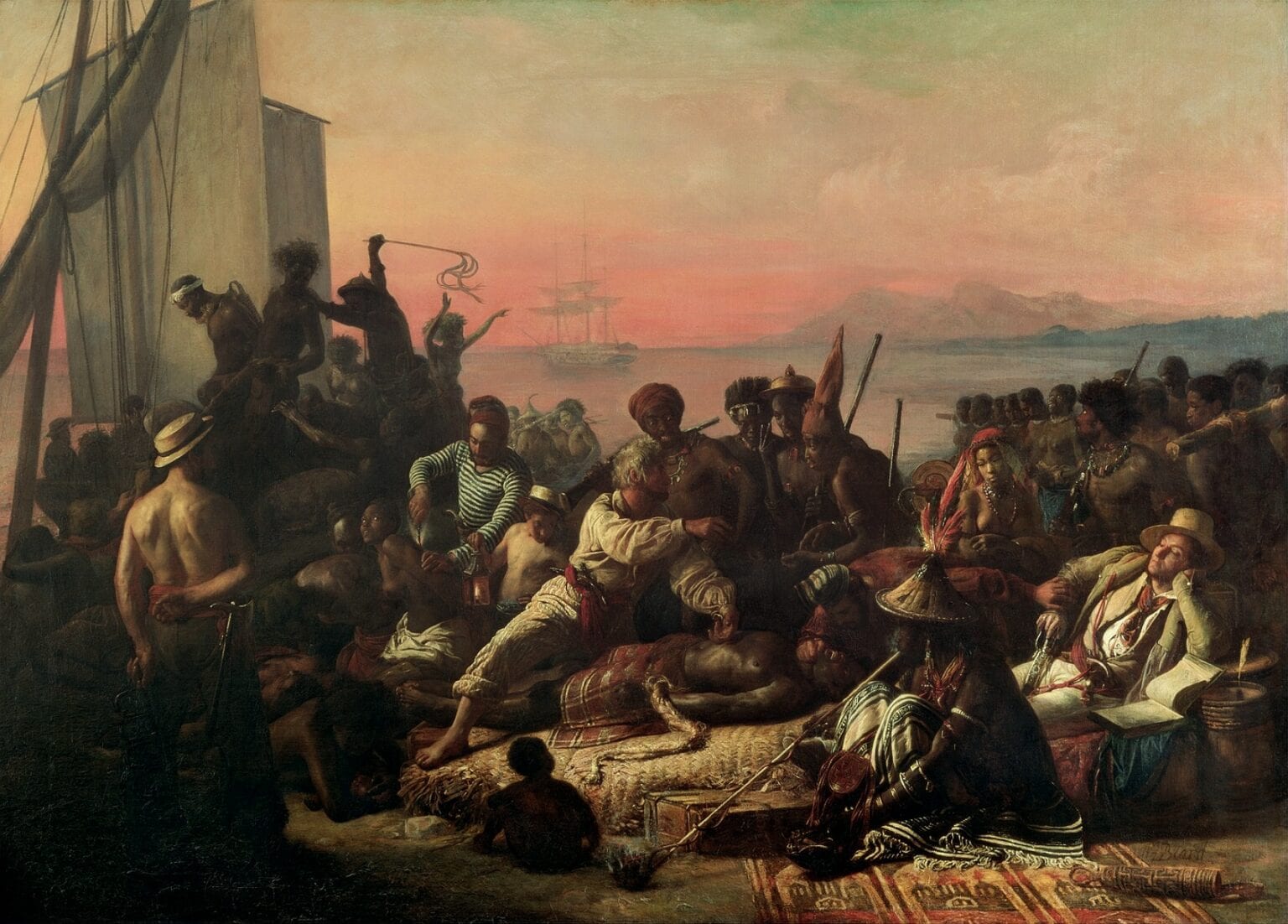
Art Against Slavery The Captured Runaway (1856) by William Gale London Art Week
The importance of art as propaganda cannot be omitted when discussing Antebellum America. Harriet Beecher Stowe wrote Uncle Tom's Cabin in 1858 in an effort to illuminate the horrors of slavery. Nearly two decades earlier; however, Edward William Clay's 1841 drawing, America, was a response to the increased abolitionist movement in the North.
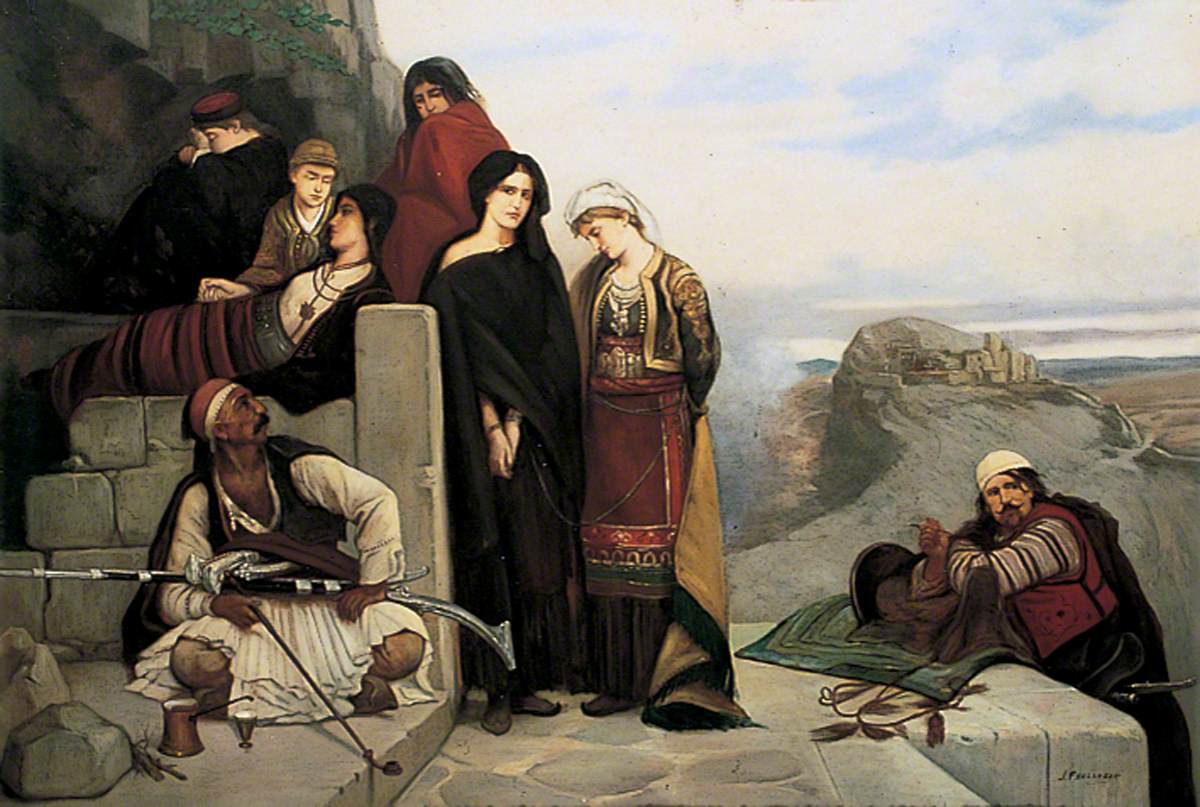
Middle East White Slave Trade Art UK
A new exhibition at Amsterdam's Rijksmuseum examines the Netherlands' role in colonialism and the slave trade. John Nost the Elder, 'Bust of an African Man,' 1701. Royal Collection Trust.

Modern slave trade how to count a 'hidden' population of 46 million
Frans Post (1612—1680) and Albert Eckhout (c.1610-1665) were two early Dutch painters to depict slavery. Post painted pictures of slaves working in idyllic rural landscapes which do little to reflect the harsh realities of their life. [7] Eckhout's work is a visual record of the ethnic mix in Dutch Brazil. [8] [9] Iconographic aspects of slavery
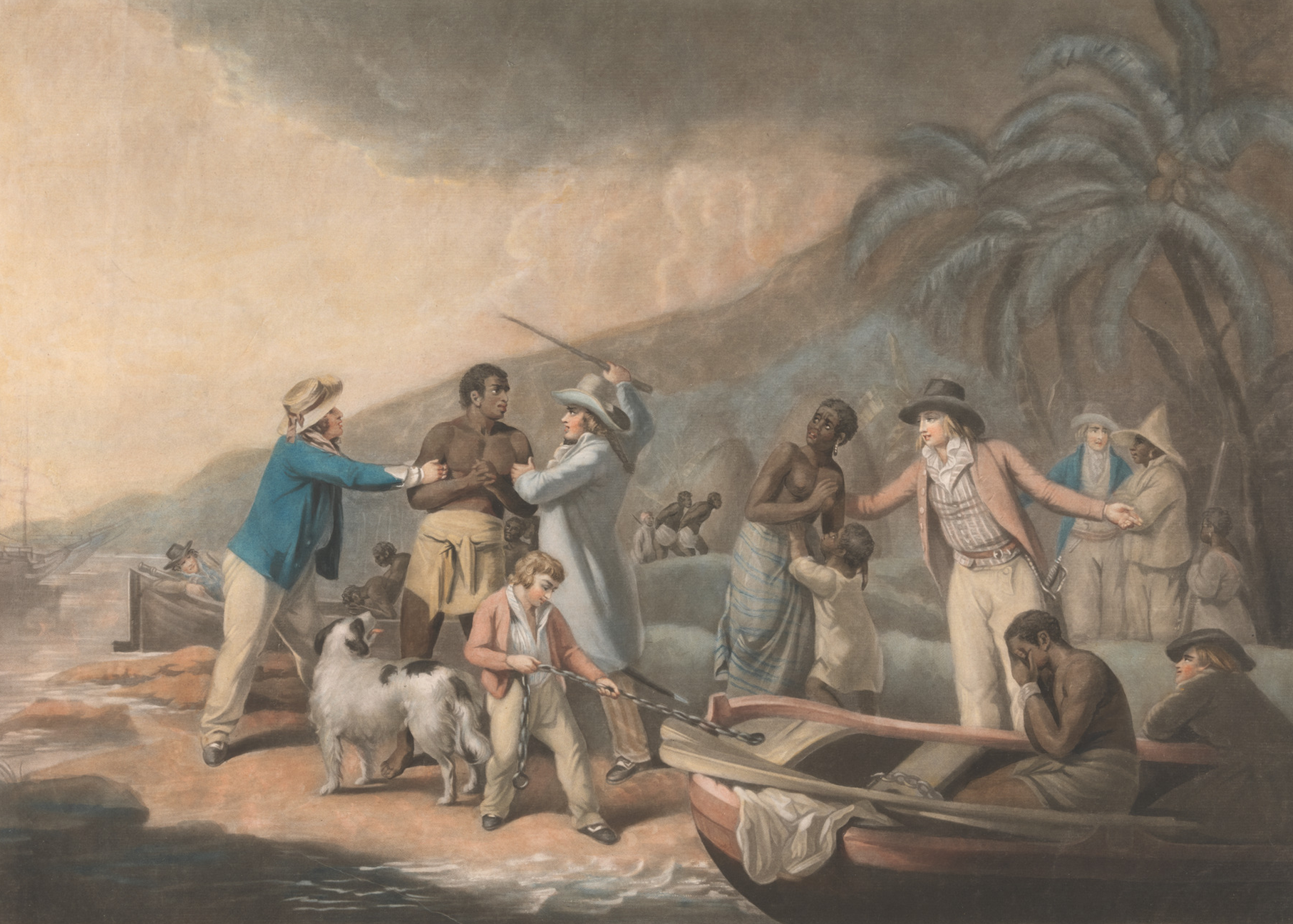
Creating The New World The TransAtlantic Slave Trade
AT THE END OF 2021, the National Gallery in London published initial findings from an inquiry into its ties to transatlantic slavery conducted in collaboration with University College London's.
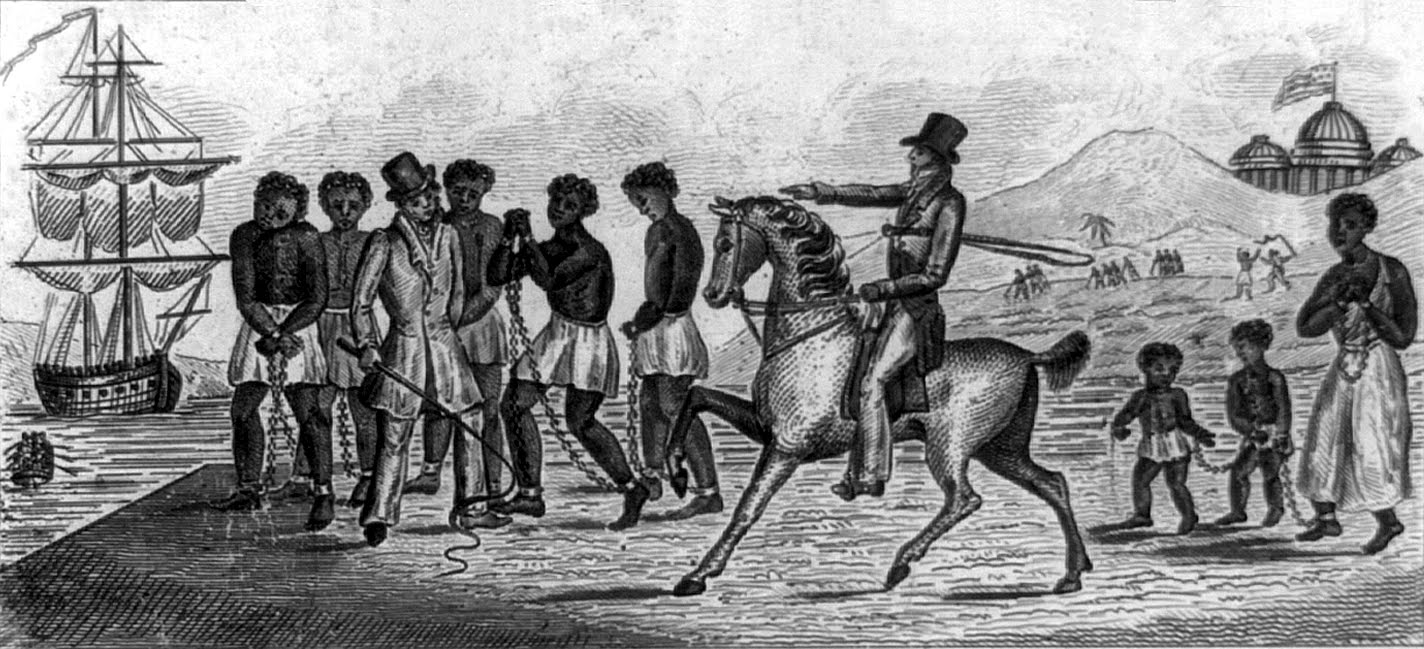
Clipart Design Stock United States slave trade, 1830 IMAGE
Art 'This is rarely taught': an exhibition examining African-Atlantic history A landmark exhibition, featuring artists including Hank Willis Thomas and Kara Walker, explores the slave trade.
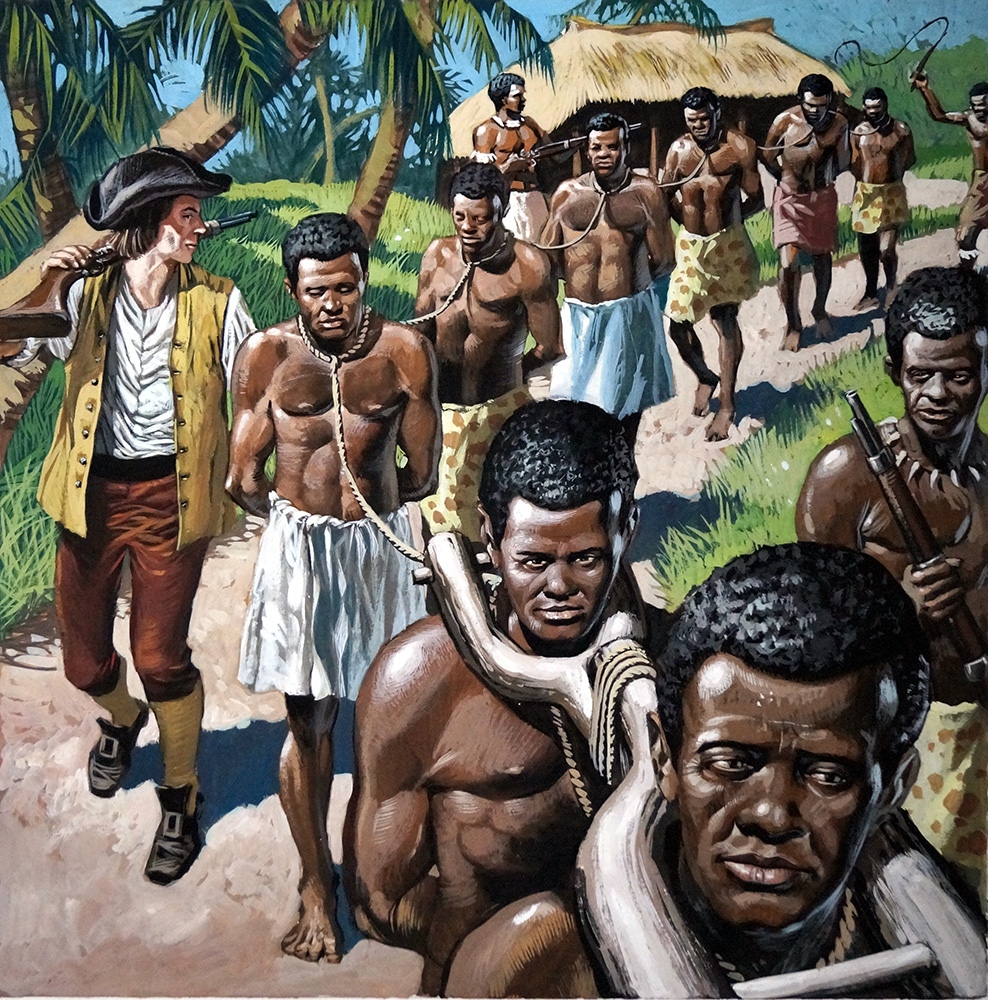
The Slave Trade (Original) by British History (Payne) Art at The Book Palace
Curator: Mary Elliott Reserve Passes Through powerful objects and first person accounts, visitors encounter both free and enslaved African Americans' contributions to the making of America and explore the economic and political legacies of the making of modern slavery.
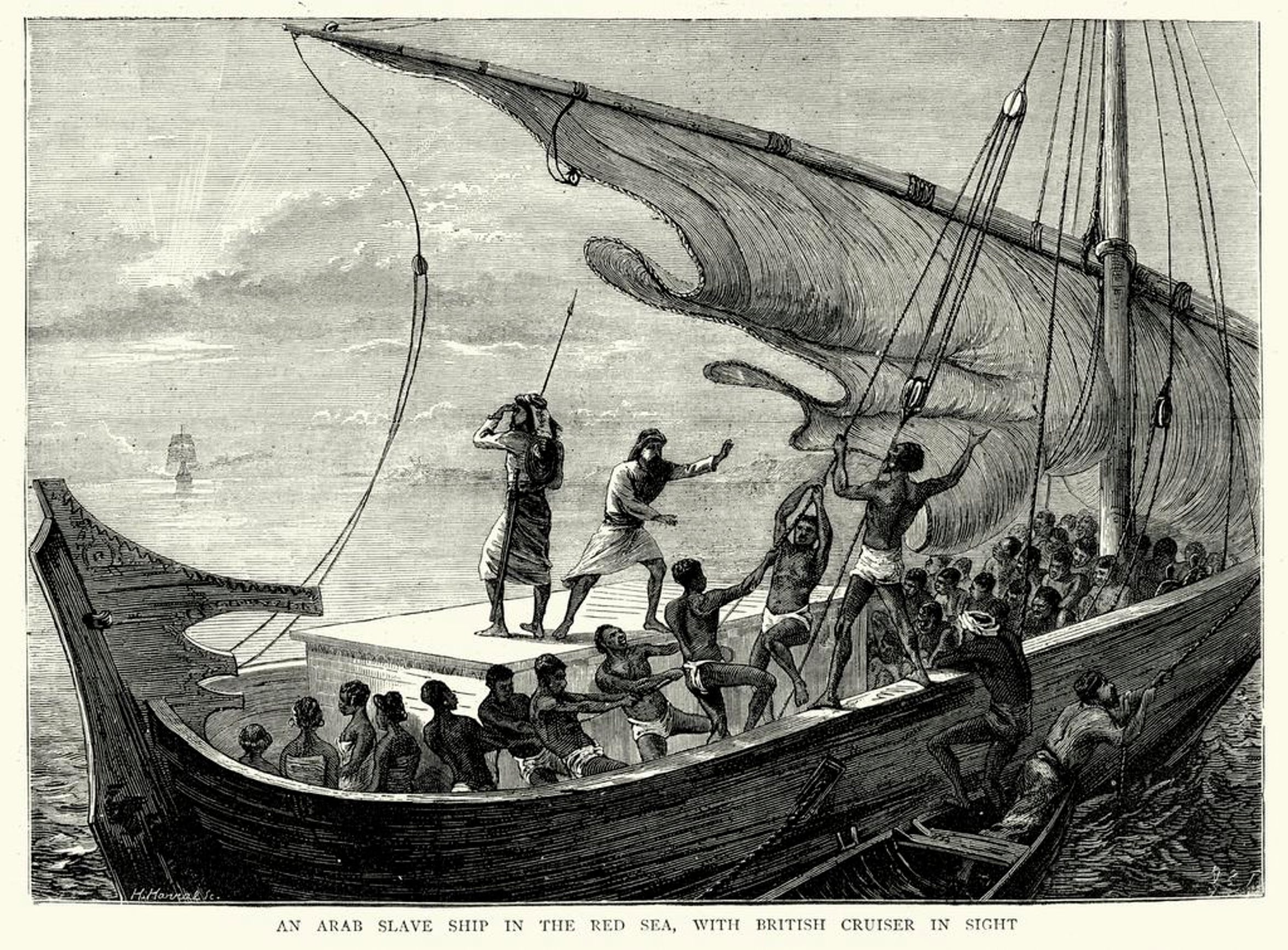
1619 in America 400 years ago, Africans arrived in Virginia
Examining art from the trans-Atlantic slave trade period is integral in understanding the artist, the subject, and societal trends. Artistic choices are able to reveal much about the creator's intentions, perceptions of the slave trade's morality and functionality, and subconscious in the artistic process.

6 Common Misconceptions About the Enslavement of African People
Art was a key tool for British abolitionists to promote their ideals. Starting in the early nineteenth century, new printing and engraving technologies made the production of affordable prints possible for the first time, meaning that artworks or designs produced by one artist could reach a mass audience, dramatically expanding their impact.

Atlantic Jihad The Untold Story of White Slavery
Images of Enslavement and the Slave Trade. Although Britain outlawed slavery in 1833 and it was abolished in the U.S. after the defeat of the Confederacy in the Civil War in 1865, the trans-Atlantic trade in enslaved African people continued. The main market for enslaved people was Brazil, where enslavement was not abolished until 1888.
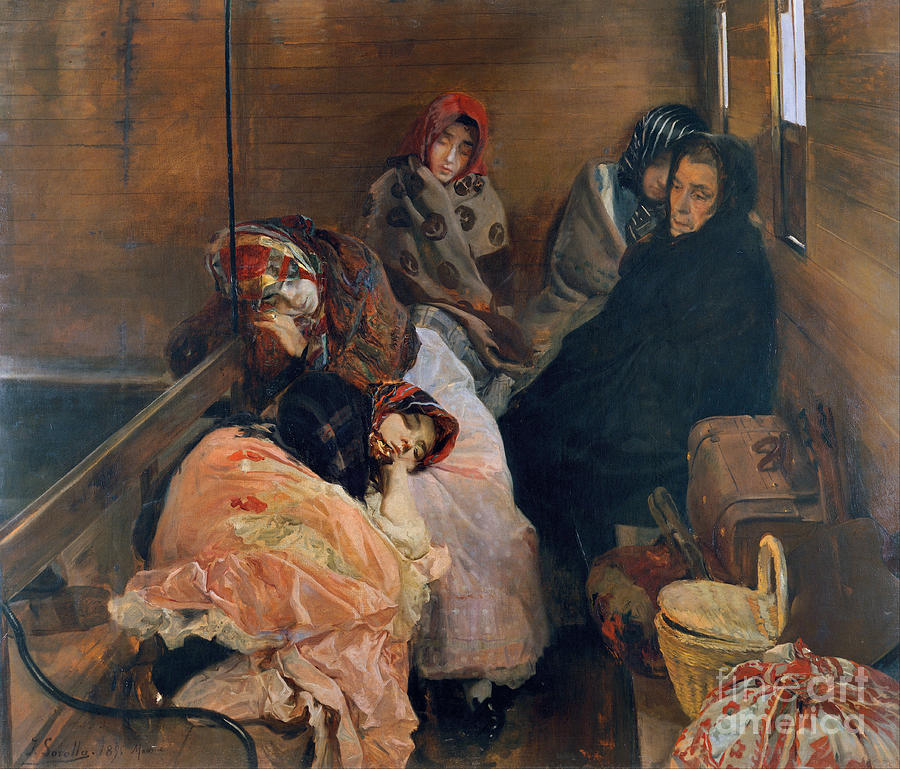
White Slave Trade Painting by Celestial Images Fine Art America
Looking closer, scholars find that specific historical moments had a profound affect on African communities and their art. During the slave trade and colonization, for example, some artists created work to come to terms with these horrific events—experiences that often stripped people of their cultural, religious and political identities.
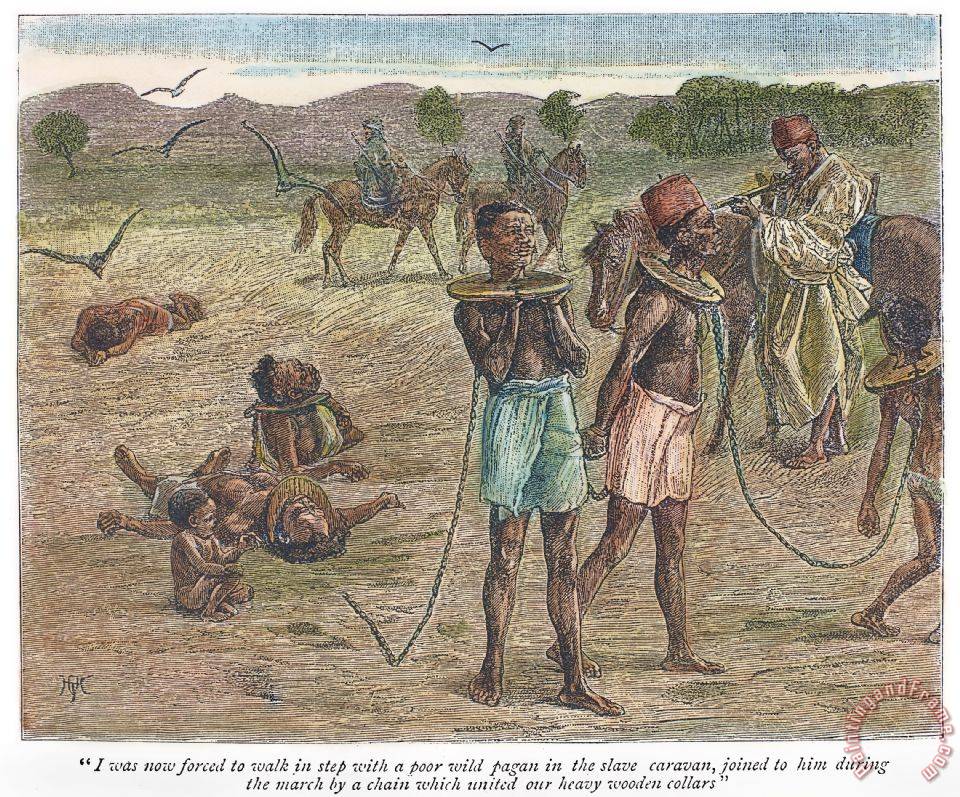
Others Africa Slave Trade, 1889 painting Africa Slave Trade, 1889 print for sale
In April 2021, the Harvard Art Museums co-presented the four-part virtual program Art Museums and the Legacies of the Dutch Slave Trade: Curating Histories, Envisioning Futures.. Presented along with the Center for Netherlandish Art at the Museum of Fine Arts, Boston, and Harvard University's Department of History of Art and Architecture, the program considered how museums and their.

Pin on ART
This resource presents a variety of artworks, from the 17th century to the present, that highlight the presence and experiences of Black communities across the Atlantic world (the relationships between people of the Americas, Africa, and Europe).